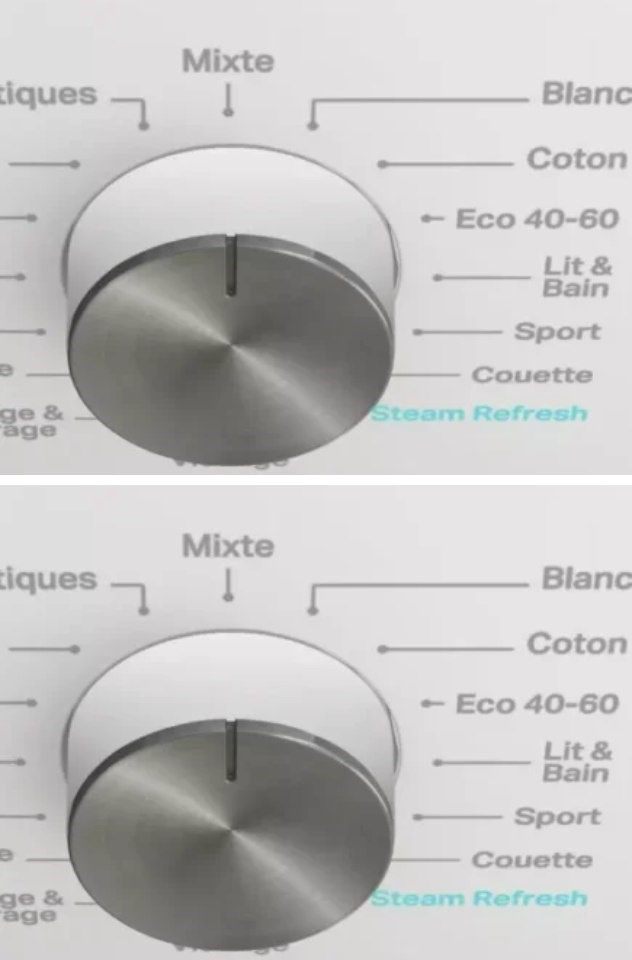ADVERTISEMENT
#### 2.2 Fabric Softener Residue
The quick wash cycle may not allow fabric softener to be properly absorbed by your clothes. Since the cycle uses less water and is faster overall, fabric softener may not have enough time to fully interact with the fibers and deliver its softening effects. This could result in clothes feeling stiff or uncomfortable to wear after washing. In addition, any fabric softener residue that remains on clothes can affect their appearance and texture, leaving them feeling less fresh and smooth.
#### 2.3 Shrinkage and Distortion
Certain fabrics, particularly wool or cotton, are prone to shrinkage when washed under high heat or subjected to intense agitation. The quick wash cycle may not provide the gentle treatment required to prevent shrinkage, leading to clothes becoming smaller or misshapen over time. While quick washes are typically done with cool or lukewarm water, the faster washing and spinning can still contribute to distortion or shrinkage if the fabric is not designed to withstand such treatment.
### When to Use the Quick Wash Cycle
While there are compelling reasons to avoid the quick wash cycle for certain loads, it’s not all bad news. The quick wash cycle can still be a great option in specific situations, especially when you’re in a hurry or need to freshen up lightly soiled clothing. Here are some instances when using the quick wash cycle can be appropriate:
– **Lightly Soiled Clothes**: If your clothes are only lightly soiled and don’t have any heavy stains or odors, the quick wash cycle can be an excellent choice. It’s a time-efficient way to clean clothes that just need a quick refresh.
– **Smaller Loads**: Quick washes work well for smaller loads or items that don’t require as much agitation. For example, washing a few shirts or undergarments may not require a full-length cycle.
– **Urgent Washes**: If you need a specific item washed quickly—like a uniform or a favorite blouse—the quick wash cycle can get the job done in record time, especially if the clothes aren’t heavily soiled.
### How to Optimize Your Laundry Routine
If you find that the quick wash cycle doesn’t meet your needs, here are a few tips to help you optimize your laundry routine for better cleaning results:
1. **Pre-treat Stains**: For particularly stubborn stains, pre-treat the affected areas with stain remover before washing. This will help break down the stain and ensure that it comes out during the full wash cycle.
2. **Choose the Right Cycle**: Opt for a longer wash cycle if you’re dealing with heavily soiled laundry, or if you’re washing delicate fabrics that need extra care. Many washing machines now come with specialized cycles for delicates, heavy-duty loads, or extra rinse options that offer the best cleaning without damaging your clothes.
3. **Use the Right Detergent**: Make sure you’re using a high-quality detergent that’s appropriate for the type of laundry you’re washing. For sensitive fabrics, a gentle detergent may be needed, while for heavily soiled loads, a more powerful detergent could do the job.
4. **Don’t Overload the Machine**: Overloading your washing machine can reduce the effectiveness of both the quick wash and standard cycles. Make sure to leave enough room for water and detergent to circulate through the clothes and to allow proper agitation.
5. **Use a Laundry Bag for Delicates**: For delicate items, such as lingerie, silk, or wool, use a laundry bag to protect the fabrics from the harsh effects of fast washing cycles. This can help preserve the integrity of the fabric.
### Conclusion: The Quick Wash Cycle – A Convenience, Not a Cure-All
While the quick wash cycle may seem like a convenient option, it’s important to consider its limitations. In many cases, the reduced time, water usage, and agitation can result in insufficient cleaning power, leaving your clothes less fresh and potentially more damaged over time. The quick wash cycle also tends to be too harsh for delicate fabrics, leading to premature wear and tear.
It’s best to reserve the quick wash cycle for lightly soiled clothes or when you’re in a rush. For heavier loads, delicate fabrics, or items with stubborn stains, it’s worth opting for a more thorough, longer cycle that ensures a better wash and helps preserve your clothes’ integrity. By being mindful of when and how you use the quick wash cycle, you can keep your clothes looking their best and extend their lifespan.
By balancing convenience with care, you’ll optimize your laundry routine and keep your clothes fresh, clean, and in great condition for years to come.
—
This article delves into the reasons why the quick wash cycle is not always the best option and highlights its potential drawbacks for fabric care and cleaning efficiency. Let me know if you would like to adjust any sections or add more information!
